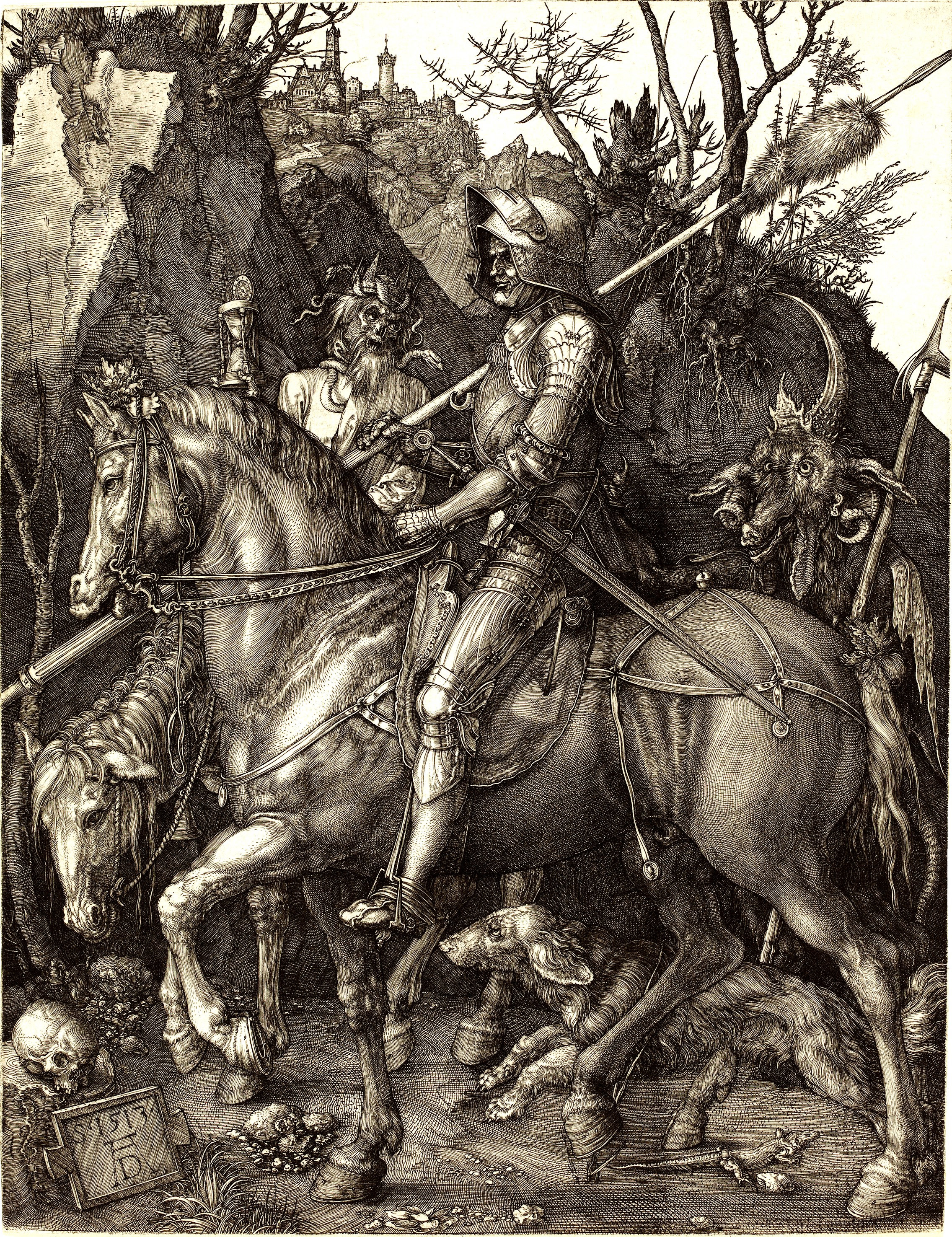Albrecht Dürer, Knight, Death, and the Devil, 1513
I love Dürer. He was one of the artists who made me want to study art history. Often considered the greatest printmaker of all time, Albrecht Dürer (1471-1528) has a vast oeuvre of both paintings and prints. Most of his prints are extremely intricate scenes, containing an astonishing amount of detail and depth (both spatial and thematic). This engraving is no exception. In this image, a knight rides impassively through this valley (accompanied by his faithful dog), although Death rides beside him, on his obligatory pale horse, and the goat-headed Devil follows behind. The complex background is rendered in typical Northern style, with rocky outcroppings and a distant town, and the Devil and Death follow this style. This work, frequently cited as one of Dürer's masterpieces, is often seen as an allegory of bravery and piety (the knight being cloaked in the armor of his faith), however I am not convinced the theme is so straightforward. If we look closely at the Knight's face, we see it is actually quite lined–perhaps the companionship of Death has taken its toll. Indeed in some ways, particularly in the upper lip, the Knight's face resembles Death's. Furthermore, the Knight's horse, although rendered strong and muscular, actually appears quite tired, its heavy breathing evidenced by its open mouth. Death meanwhile gazes at the Knight, almost adoringly, and holds up an hourglass to show him that his time is running out. The Devil's role in the scene is more complicated. What place does he have following a supposedly valiant knight? To lead him astray? Then surely he should be in front of the knight, waiting to impede him. Indeed the Devil is not even looking at the knight. Instead he is gazing out at the viewer, bringing us into the scene. The Devil reminds us of our fate, to fall into Death's cold grip. If even this gallant knight cannot escape the pale rider, how can we?

No comments:
Post a Comment